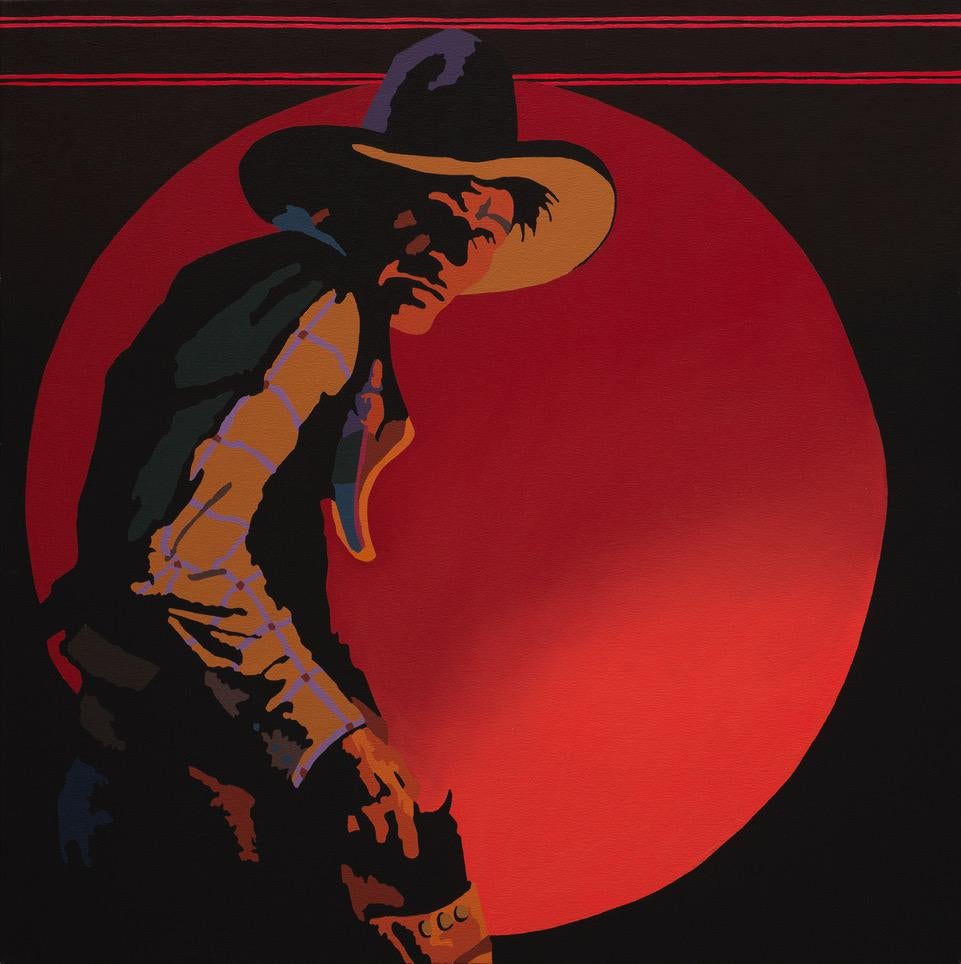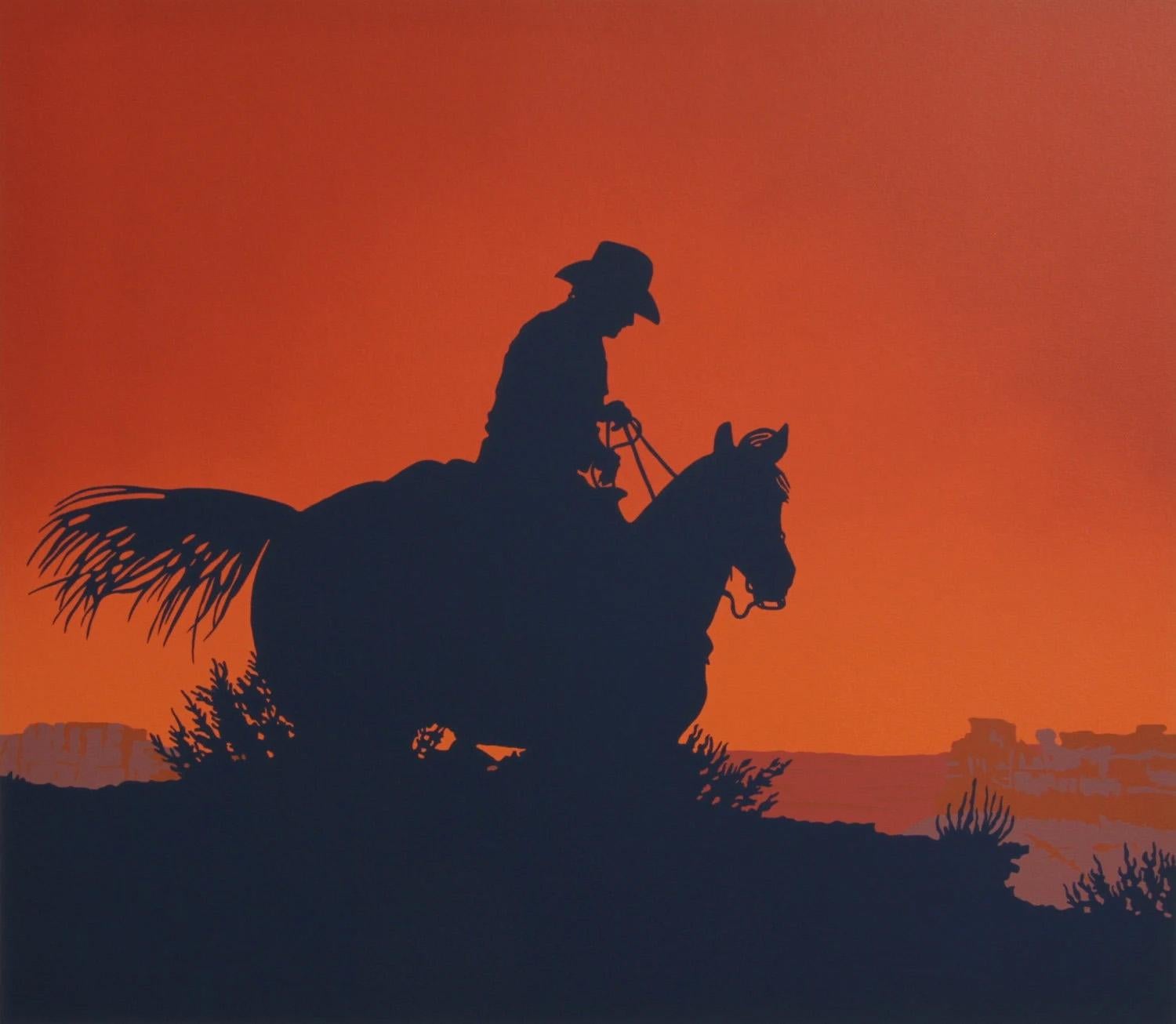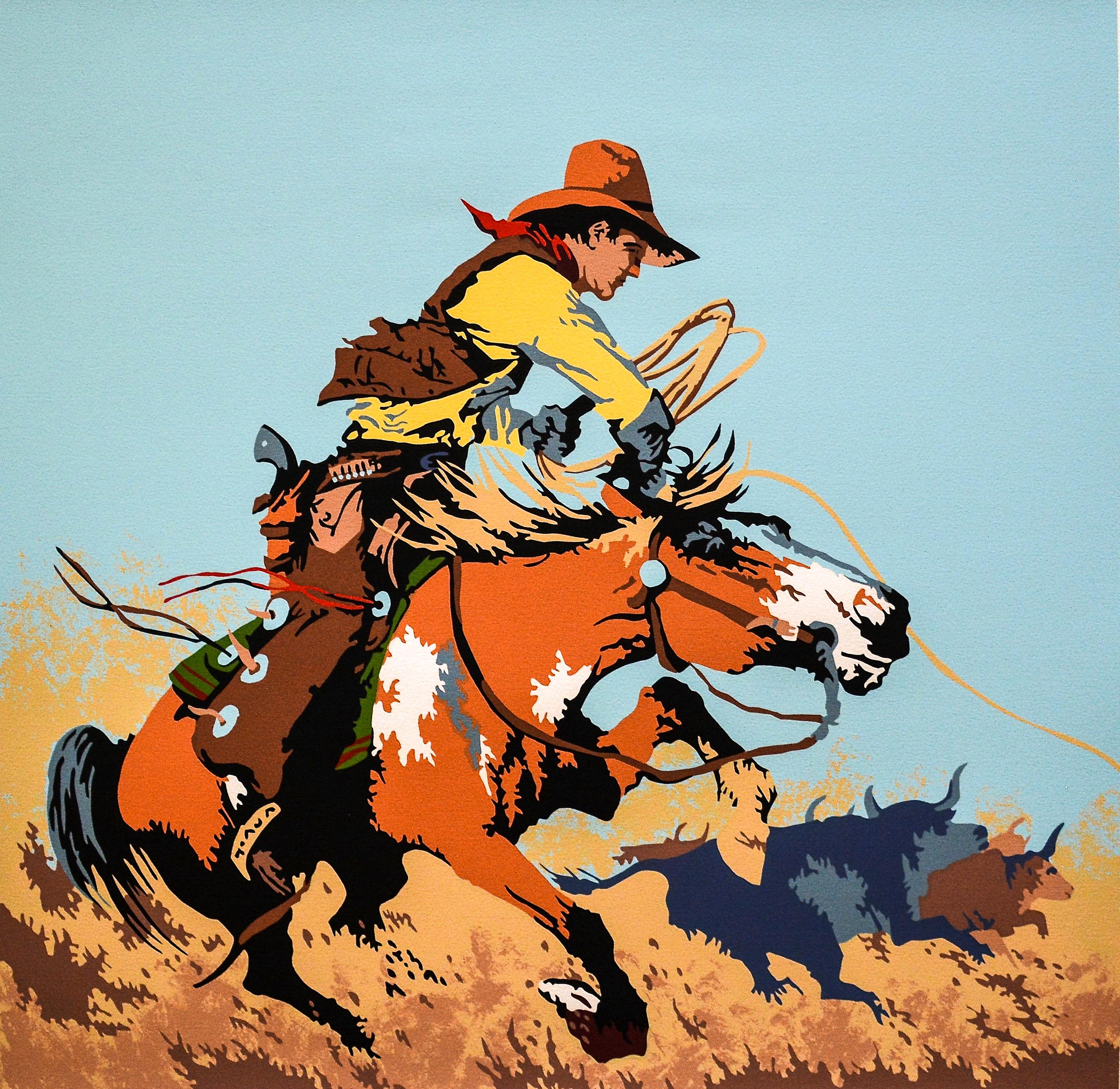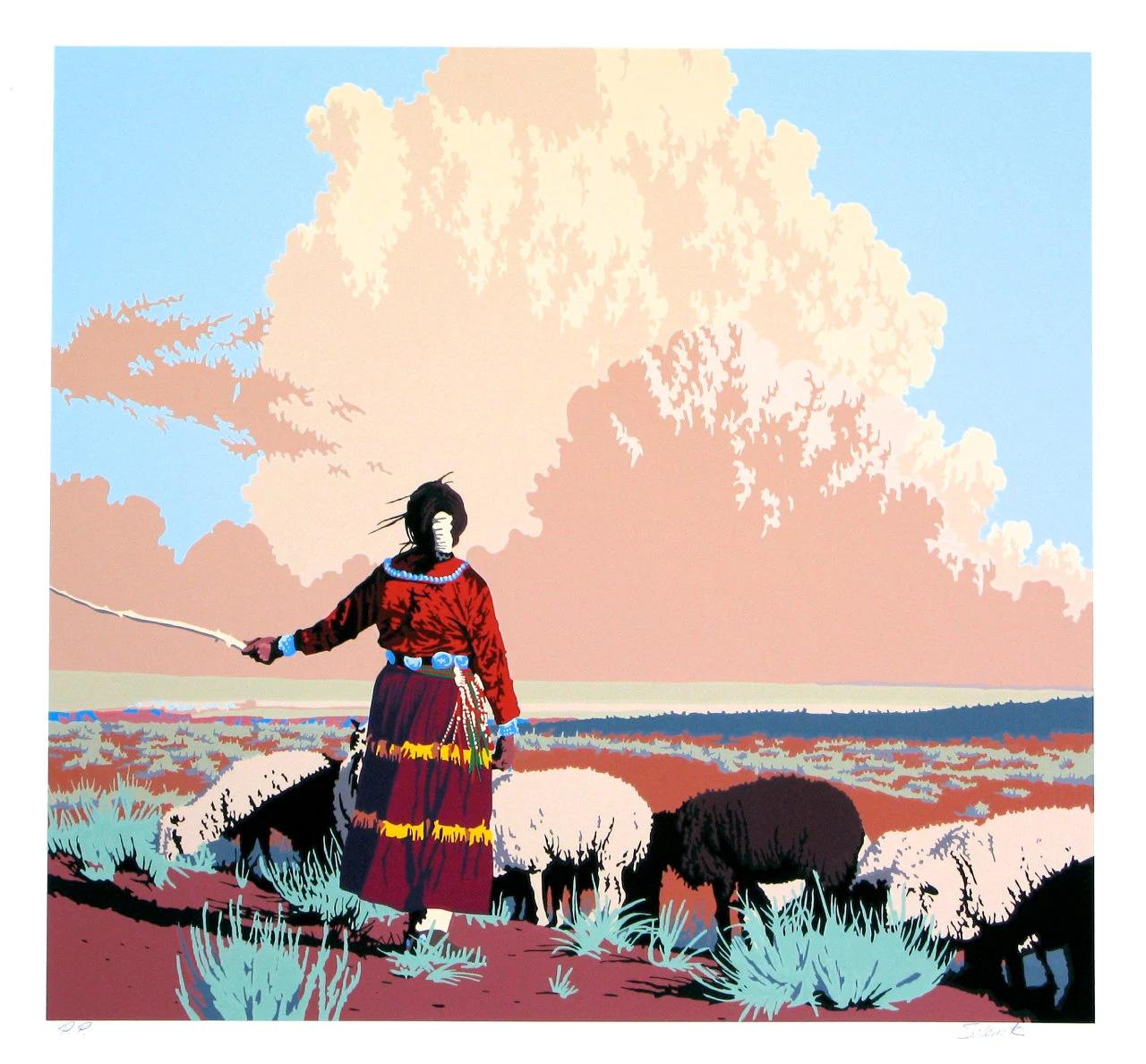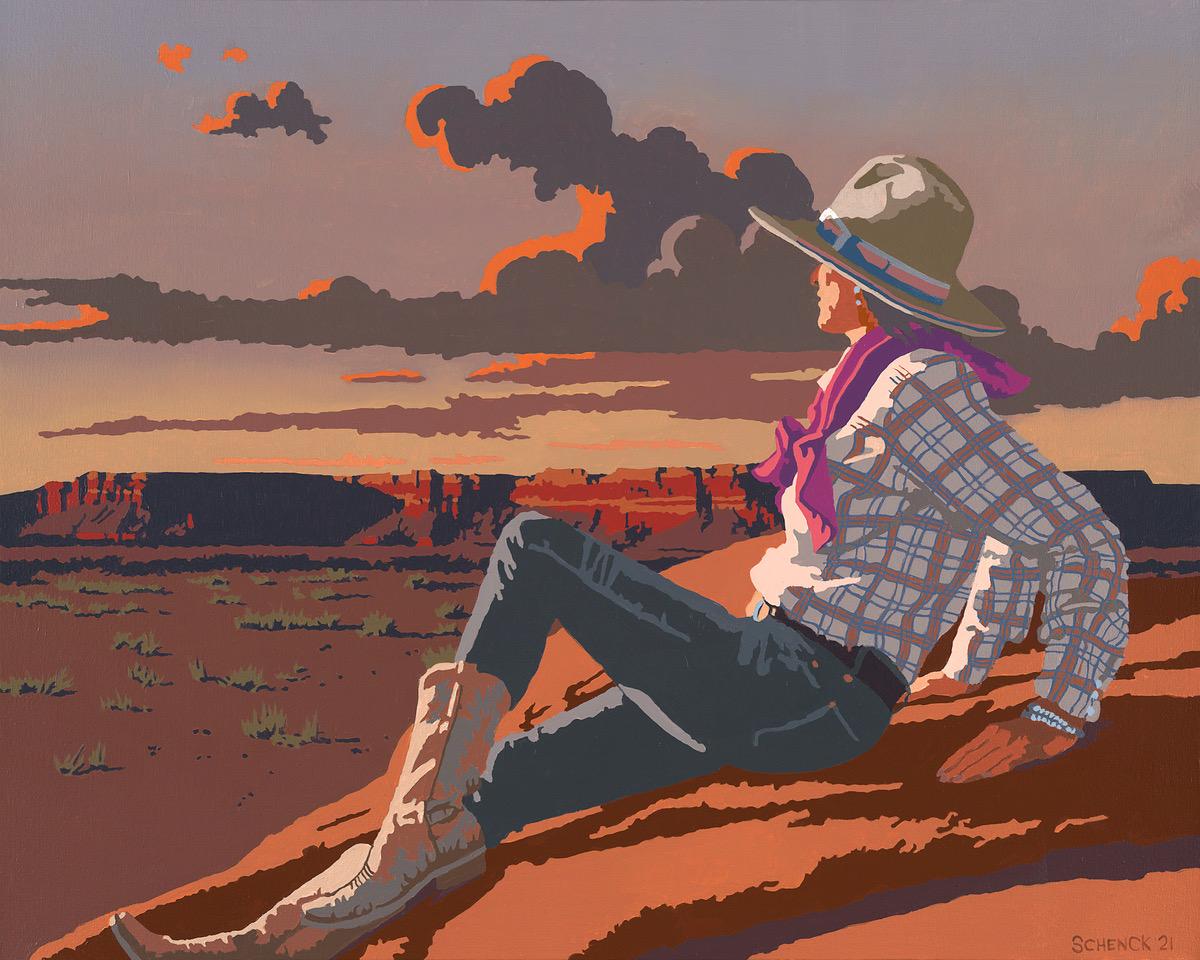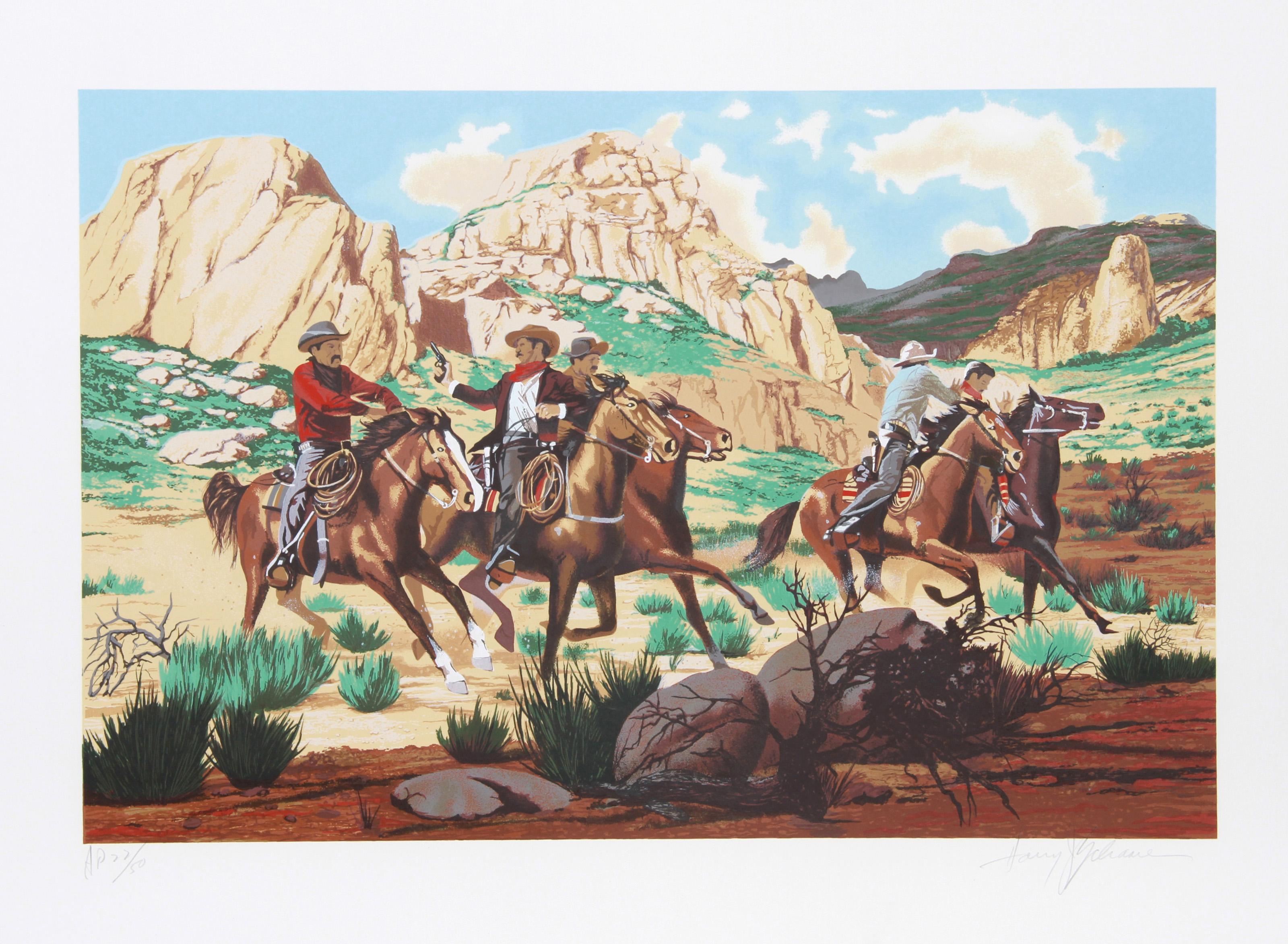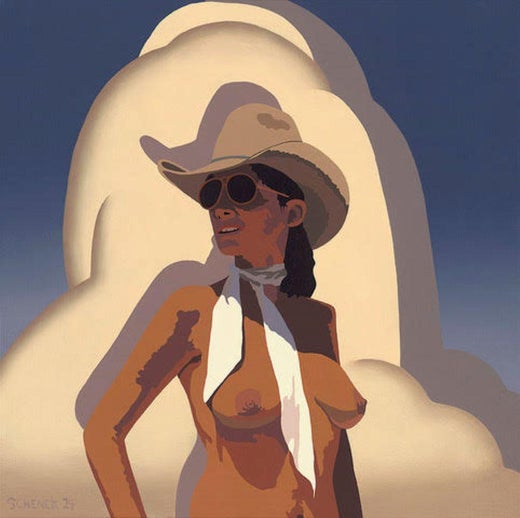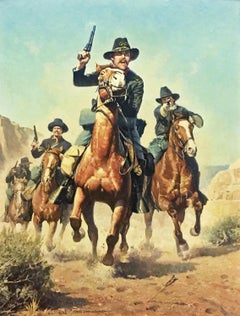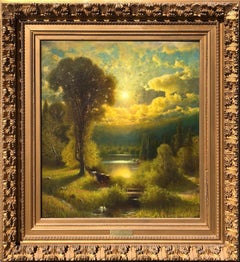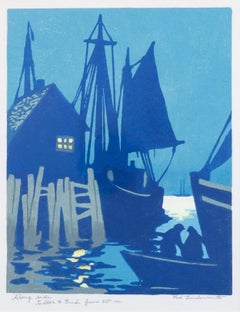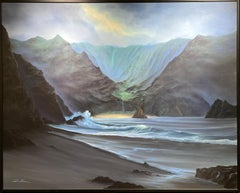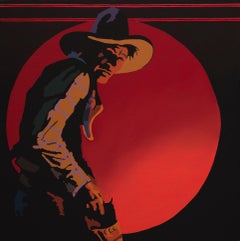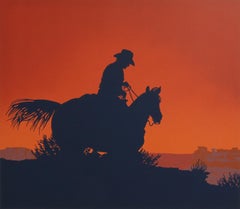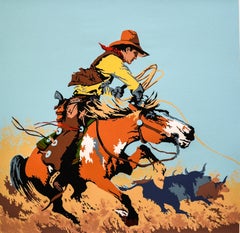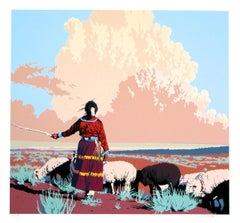Items Similar to Hurry Sundown
Want more images or videos?
Request additional images or videos from the seller
1 of 9
Billy SchenckHurry Sundown1985
1985
Price Upon Request
Price Upon Request
Price Upon Request
Price Upon Request
Price Upon Request
Price Upon Request
Price Upon Request
Price Upon Request
Price Upon Request
Price Upon Request
About the Item
Billy Schenck (American, b. 1947)
Hurry Sundown, 1985
Edition 19/60
Serigraph
21 x 38 inches
Signed, Titled, Dated, and Numbered Lower Margin
Billy Schenck is a contemporary artist with work in over 40 museum collections and corporate collections that include Sony, IBM, Saatchi and Saatchi, American Airlines and others. His subject matter spans genres from western landscape to cowboy pop. He has been exhibited widely in the United States and Europe. He is a World Champion Ranch Sorting winner and the proprietor of the Double Standard Ranch in Santa Fe, New Mexico, his home for the past two decades.
- Creator:Billy Schenck (1947, American)
- Creation Year:1985
- Dimensions:Height: 21 in (53.34 cm)Width: 38 in (96.52 cm)Depth: 1 in (2.54 cm)
- Medium:
- Movement & Style:
- Period:
- Condition:
- Gallery Location:Missouri, MO
- Reference Number:1stDibs: LU74737660862
Billy Schenck
Billy Schenck has been known internationally for 44 years as one of the originators of the contemporary 'Pop' western art movement. He is an American painter who incorporates techniques from Photo-Realism with a Pop Art sensibility to both exalt and poke fun at images of the West. Schenck has had over 100 solo shows. His work is in the permanent collections of 48 museums and important private and corporate collections. Museum collections include the Smithsonian, Mesa Southwest Museum, The Tucson Museum of Art, The Denver Art Museum, Museum of the Southwest, Midland TX, Albuquerque Fine Arts Museum and the New Mexico Museum of Art. Private collections include the estate of Malcolm Forbes, Steve Forbes, Chris Evert, Elaine Horwitch, Louis Meisel, Martina Navratilova, Laurance Rockefeller, Fritz Scholder and Sylvester Stallone. Corporate collections include: American Airlines, I.B.M., Raymond James Financial, Wells Fargo Bank, Hilton Hotels, Sturm Ruger and The National Bank of Switzerland. “What has remained constant throughout Schenck’s career is his individuality in dealing with the subject matter of the west. Using the artistic formula of classic western film direction and the photographically reliant systems of contemporary art, he has bridged two genres that resonate with the American experience. From early depictions of cinematic cowboys to real-life cowboys and cowgirls to poetic reveries about the Native American existence in the Southwest, Schenck melds the real with the imagined, autobiography with fantasy.” -Julie Sasse, Chief Curator and Curator of Modern and Contemporary Art, Tucson Museum of Art.
About the Seller
5.0
Vetted Professional Seller
Every seller passes strict standards for authenticity and reliability
Established in 1970
1stDibs seller since 2017
155 sales on 1stDibs
Typical response time: 1 to 2 days
- ShippingRetrieving quote...Shipping from: Missouri, MO
- Return Policy
Authenticity Guarantee
In the unlikely event there’s an issue with an item’s authenticity, contact us within 1 year for a full refund. DetailsMoney-Back Guarantee
If your item is not as described, is damaged in transit, or does not arrive, contact us within 7 days for a full refund. Details24-Hour Cancellation
You have a 24-hour grace period in which to reconsider your purchase, with no questions asked.Vetted Professional Sellers
Our world-class sellers must adhere to strict standards for service and quality, maintaining the integrity of our listings.Price-Match Guarantee
If you find that a seller listed the same item for a lower price elsewhere, we’ll match it.Trusted Global Delivery
Our best-in-class carrier network provides specialized shipping options worldwide, including custom delivery.More From This Seller
View AllIn Close Pursuit
Located in Missouri, MO
Site Size: 20 x 15 inches
Framed Size: 28.5 x 24 inches
Donald Spaulding's artistic talents were recognized early. Encouraged by his high school teachers to pursue formal art traini...
Category
1990s American Realist Figurative Paintings
Materials
Oil, Illustration Board
Price Upon Request
Sunset
By James Fairman
Located in Missouri, MO
James Fairman
"Sunset" c. 1880
Oil on Canvas
Signed Lower Left
Site: 32.5 x 29.5 inches
Framed: 46 x 42 inches
James Fairman worked as a landscape painter, critic, lecturer, musicia...
Category
1880s American Realist Landscape Paintings
Materials
Canvas, Oil
Price Upon Request
Alongside
By Tod Lindenmuth
Located in Missouri, MO
Alongside, 1941
Tod Lindenmuth (American, 1885-1976)
Color Woodblock Print
9 x 7 inches
19.75 x 14.5 inches with frame
Signed Lower Right
Titled and Dated Lower Left
A founder of the Provincetown Art Association and one of the original Provincetown Printers, Tod Lindenmuth was a semi-abstract painter and graphic artist who did much to promote modernist styles. Although he was much influenced by Abstract Expressionism, his subject matter was realistic enough to be recognizable. He did linoleum cuts and was one of the first to work with that medium, and towards the end of his life, he experimented with collage. In the 1930s, he had commissions for the Public Works of Art Project and the Works Progress Administration.
Lindenmuth was born in Allentown, Pennsylvania. He studied with Robert Henri at the New York School of Art in Manhattan, and in Provincetown with E. Ambrose Webster and George Elmer Browne.
He first exhibited in Provincetown in 1915, and between 1917 and 1928 served on the jury for the Provincetown Art Association's 'First Modernistic Exhibition". He exhibited regularly with the Society of Independent Artists in New York.
He married artist and illustrator Elizabeth Boardman Warren...
Category
1940s American Modern Figurative Prints
Materials
Color
A Place Without Time
Located in Missouri, MO
A Place Without Time
Michael Protiva (20th/21st Century)
Signed Lower Left
48 x 60 inches
49.25 x 61.25 inches with frame
Michael Protiva's interest i...
Category
21st Century and Contemporary Contemporary Landscape Paintings
Materials
Canvas, Oil
Sundown
By Robert Robin Fenson
Located in Missouri, MO
Robert Robin Fenson (Active 1889-1914, British)
"Sundown"
Oil on Canvas
16 x 23.5 (site)
19 x 27 (framed)
Category
Late 19th Century Land Landscape Paintings
Materials
Canvas, Oil
Price Upon Request
The Deer Hunters
Located in Missouri, MO
Laverne Nelson Black (American, 1887-1938)
"The Deer Hunters"
Signed Lower Left
Canvas: 24 x 22 inches
Framed: 30.5 x 28.5 inches
Born in Viola,...
Category
Early 20th Century American Impressionist Landscape Paintings
Materials
Canvas, Oil
Price Upon Request
You May Also Like
Study for the Wrong Side of Paradise
By Billy Schenck
Located in Bozeman, MT
One of the originators of the Western pop art movement, Billy Schenck incorporates techniques from photorealism with a pop art sensibility to both exalt and poke fun at images of the West. Schenck is known for utilizing cinematic imagery reproduced in a flattened, reductivist style, where colors are displayed side-by-side rather than blended or shadowed. In the August 2014 issue of SouthwestArt magazine, his work was described as “a stance … a pendulum between the romantic and the irreverent.”
Schenck’s artwork is now in 48 museum collections, including Smithsonian Institution, Denver Art Museum, The Autry Museum of Western Heritage, Booth Western Art Museum, Tucson Museum of Art, Phoenix Art Museum, the Mesa Southwest Museum, Museum of the Southwest, Midland TX...
Category
2010s Pop Art Figurative Paintings
Materials
Canvas, Oil
Down to the Valley by Bill Schenck
By Bill Schenck
Located in Phoenix, AZ
Down in the Valley
Bill Schenck
Serigraph 46/50
Edition of 50
Image size: 25 x 29 inches
Paper size: 31 x 35 inches
SHIPPING CHARGES INCLUDE SHIPPING, PACKAGING & INSURANCE
UNFRAM...
Category
1990s Contemporary Figurative Prints
Materials
Screen
"Waco" Serigraph by Billy Schenck, 1981
By Billy Schenck
Located in Los Angeles, CA
Bill Schenck
Waco
Serigraph 7/58
1981
Hand signed, date and numbered by Schenck in pencil.
25.75 inches H. x 25 inches W.
'Waco' is classic early example...
Category
Late 20th Century Pop Art Landscape Prints
Materials
Screen
Bill Schenck, Last Horizon, Serigraph
By Bill Schenck
Located in Phoenix, AZ
SHIPPING CHARGES INCLUDE SHIPPING, PACKAGING & **INSURANCE**
Last Horizon, 1991
Bill Schenck
Serigraph, Printers Proof
Size: 27.75 x 29.75 inches
UNFRAMED
SHIPPING CHARGES INCLUDE...
Category
1990s Contemporary Landscape Prints
Materials
Screen
Across the Mancos Canyon
By Billy Schenck
Located in Bozeman, MT
One of the originators of the Western pop art movement, Billy Schenck incorporates techniques from photorealism with a pop art sensibility to both exalt and poke fun at images of the West. Schenck is known for utilizing cinematic imagery reproduced in a flattened, reductivist style, where colors are displayed side-by-side rather than blended or shadowed. In the August 2014 issue of SouthwestArt magazine, his work was described as “a stance … a pendulum between the romantic and the irreverent.”
Schenck’s artwork is now in 48 museum collections, including Smithsonian Institution, Denver Art Museum, The Autry Museum of Western Heritage, Booth Western Art Museum, Tucson Museum of Art, Phoenix Art Museum, the Mesa Southwest Museum, Museum of the Southwest, Midland TX...
Category
2010s Pop Art Figurative Paintings
Materials
Canvas, Oil
The Getaway, American Realist Lithograph by Harry Schaare
By Harry Schaare
Located in Long Island City, NY
Harry Schaare, American (1922 - 2008) - The Getaway, Year: Circa 1980, Medium: Lithograph, signed and numbered in pencil, Edition: AP 50, Image Size: 16 x 24.5 inches, Size: 23 ...
Category
1980s American Realist Animal Prints
Materials
Lithograph
